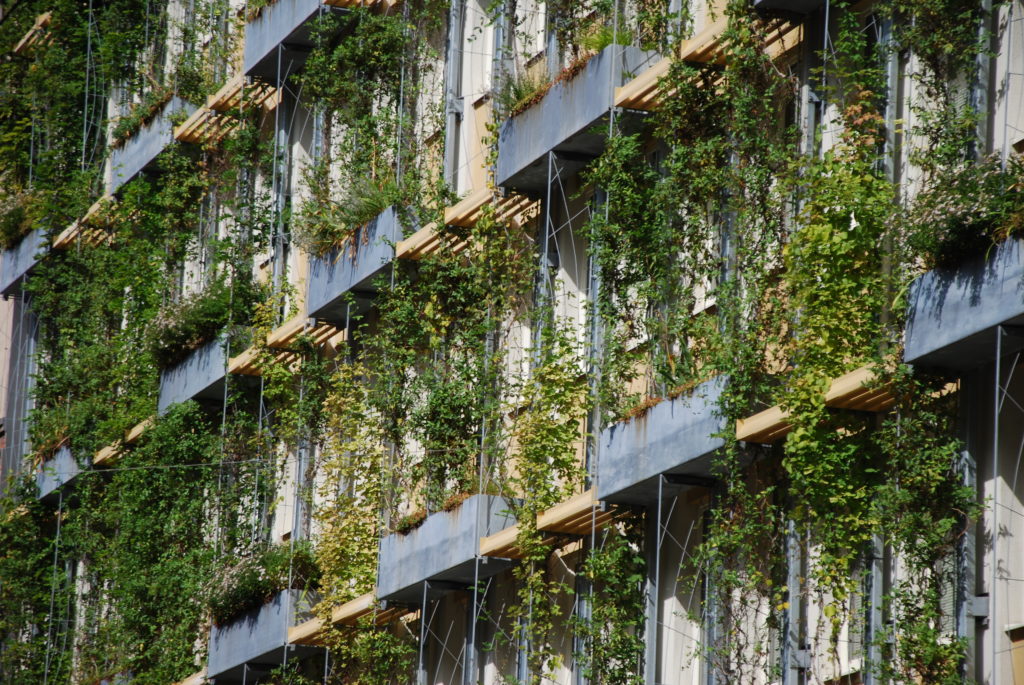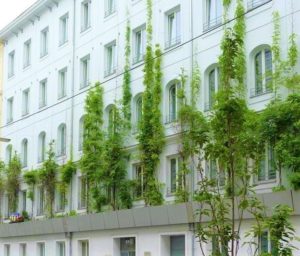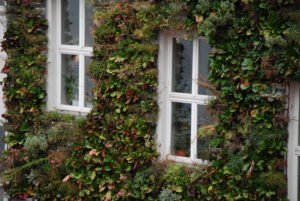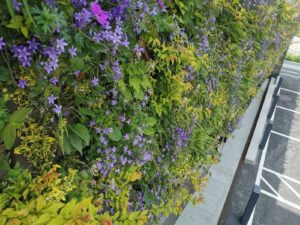Austrian standard for vertical greening (ÖNORM L1136)
New standard for vertical greening is published

“The aim of the new ÖNORM is to establish and maintain sustainable greening of façades all year round, taking into account seasons, geographical and climatic location as well as the greening objective” explains Ing. Stefan Brunnauer, VfB’s Head of Technical Committee for green walls. The standard can be applied to greening pergolas, dry stone walls, gabions, noise barriers and self-supporting structures. The scope also includes steep walls with an inclination of 30 to 150 degrees.
Quality assurance and minimum standard: the new ÖNORM L1136 for facade greening defines principles and requirements for vertical greening of buildings.
Greening of buildings serves as protection for buildings and brings manifold advantages for cities, climate as well as the environment. Furthermore, it increases the human well-being. In the field of building greening, there are already established standards called (ÖNORM) for roof and interior greening: These must be observed in implementation projects. For a quality-assured implementation of green facades, the first European standard for vertical greening has now been published in the form of ÖNORM L1136.
Over a period of three years, a technical group of Austrian Standards International (ASI) worked on the new standard, together with experts among others from the Austrian association for greening buildings (VfB). In the process, many years of practical experience were compiled and corresponding minimum standards for façade greening were created. ÖNORM L1136 defines construction methods, maintenance, servicing and care of outdoor vertical greening as well as the application of building materials and plants. It includes the following categories of vertical greening:
- ground-based with self-climbers or with climbing plants and climbing trellis
- trough-based
- wall-bound with partial or full-surface vegetation supports.



Building for a climate-friendly future
“National and international standards can contribute significantly to achieving climate goals, especially in the building sector. Buildings account for one third of the total energy demand and are therefore an important part of the climate strategy,” emphasises ASI Director DDr. Elisabeth Stampfl-Blaha, hoping that the existing expert knowledge will be used more strategically as a protective shield against global warming.
With the right strategies and targeted structural measures, buildings can counteract the effects of climate change. This also includes the greening of facades. Vertical greening can significantly influence the environment and buildings in many ways compared to non-greened structures:
- Improvement of the microclimate and the quality of stay
- Rainwater management and relief of the sewage system
- Promotion of urban biodiversity
- Ecological compensation of green space losses
- Shading, cooling, insulation and protection of the building structure
- Reduction of the sound level
- Activation of unused urban areas as multifunctional surfaces
Get the Austrian standard ÖNORM L1136 here:
Enquiries & contact:
GRÜNSTATTGRAU Research and Innovation Lab
www.gruenstattgrau.at

BeRTA module
The first green façade module that already complies with the new standard is the BeRTA green façade, a research project that was developed and tested together with the City of Vienna and BOKU Vienna is now available and eligible for funding throughout Vienna.
For details see: www.berta-modul.at

